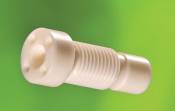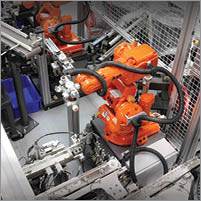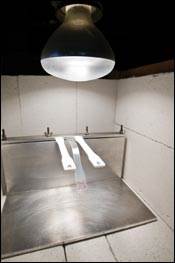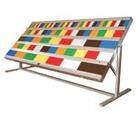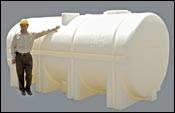Additives
NPE 2009 News Flash
Injection MoldingHybrid Press Has Electric ClampNew injection presses that combine servo-electric and hydraulic movements to achieve high performance with energy efficiency will be discussed by Arburg Inc., Newington, Conn.
Read MoreBio-Resins Tackle Durable Applications
Bioplastics were initially created for single-use applications like packaging and hotel key and gift cards.
Read MoreAutomotive Plastics Adding More Value in Tough Times
The dramatic global downshifting in automotive manufacturing hasn’t put the brakes on plastics innovation, if recently announced developments are any indication.
Read MoreColloidal Silica Processing Aid Slashes Molding Cycle Times
Ultra-fine synthetic silica particles have been shown in laboratory and commercial field trials to reduce injection molding cycle times by 20% to 30% in polypropylene, filled and unfilled nylon, PBT, and ABS.
Read MoreNovel Liquid Modifiers for Polyolefins Have Multiple Functions
A family of liquid polymer modifiers with a proven track record in EPDM compounds has been expanded for use in a broad range of polyolefins.
Read MoreComposites Embrace Mass Production
The focus this year at the international JEC Composites Show in Paris was not so much on brand-new processes as on adapting existing processes and materials for mass production, especially of large parts with critical structural demands. Attracting the most attention was wind energy, where composite material usage is growing more than 17%/yr, according to Gurit (formerly SP Systems), a Swiss-based global prepreg supplier with U.S. operations.
Read MoreEnhancing Biopolymers: Additives Are Needed for Toughness, Heat Resistance & Processability
Plastics are going “green,” but they will need some help to get there. Biodegradable polymers derived from renewable resources are attracting lots of interest and publicity, but that enthusiasm is counterbalanced by persistent questions of availability, cost, performance, and processability. All these issues are inter-related: Increasing demand will lead to more capacity, which will presumably lead to lower prices. But the foundation is market demand, which ultimately depends on whether biopolymers will have the performance properties and processability to compete with existing non-renewable plastics.
Read MoreWeather Testing For the Real World
Broader use of plastics in building products and a growing desire to minimize painting of automotive parts is increasing the need for reliable predictions of light stability and weathering performance.
Read MoreAdditives and Colorants Score Dramatic Advances
Among the host of new additives at K 2007 were a number of unusual entries: additives to add scratch resistance or reduce odor, leaps ahead in PP clarifying, specialized antioxidant protection for nanocomposites, a growth enhancer for greenhouse films, and a naturally free-flowing TiO2. In addition, “Green” was the theme of exhibits that highlighted “all-natural” additives for biopolymers, and colors to enliven recycled resins.
Read MoreAdvances in Materials, IML and Tooling Highlight Rotomolders' Meeting
Several new resins and additives that raise part performance and improve processability were launched at the recent 32nd Annual Fall Meeting of the Association of Rotational Molders (ARM) in Detroit.
Read More

